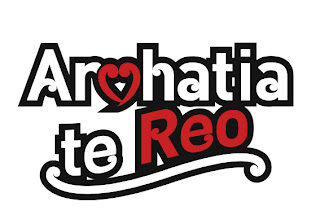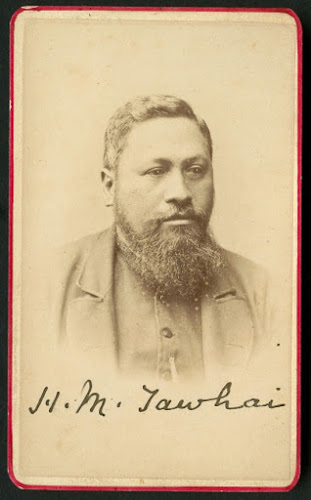Te Wiki o Te Reo Maori/Maori Language Week and Te Reo Maori (Maori Language) Claim
 |
| Arohatia Te Reo, Te Wiki o Te Reo Maori 2012 |
 |
| 1972 Maori Language March, NZhistory.net |
 |
| Maori Language Week March, Wellington, 1 August 1980, EP/1977/2470/20A, ATL |
 |
| Members of the Waitangi Tribunal visit the Kohanga Reo at Waiwhetu Marae, 26 June 1985, EP/1985/2942/15-F, ATL |
The Tribunal heard evidence from elderly Maori of the punishment meted out to them whenever they spoke te reo Maori at school, even in the ‘Native Schools’ first established for Maori education under the Native Schools Act 1867. The Education Department insisted that there had never been a policy against te reo Maori but, as Sir James told the Tribunal: “The facts are incontrovertible. If there was no such policy there was an extremely effective gentlemen’s agreement!” He recalled being sent into the bush to cut a piece of pirita (supplejack vine) with which he was strapped for speaking te reo Maori within the school grounds. Others recounted: “Na te korero i tetahi kupu Maori i tonoa matou ki te tiki kohatu, ka wepua ranei” (For speaking one word in Maori, we were sent to go and get stones or whipped).
After World War Two, many Maori speakers ceased to pass on the language to their children, seeking to avoid the punishment and disadvantage they had suffered at school, and to help their children flourish during a time of mass Maori migration to the country’s growing cities. An increasingly urbanised and young Maori population heard very little te reo Maori, growing up in a monolingual environment with a monolingual media. The Tribunal reported that te reo Maori could no more survive in such an environment than could an oyster bed when its environment became polluted.
The government addressed some of these recommendations in the Maori Language Act 1987, which declared te reo Maori to be an official language of New Zealand and established Te Taura Whiri i te Reo Maori (the Maori Language Commission), “to promote the Maori language as a living language and an ordinary means of communication.”
 |
| Archi Rangi at the Wainuiomata Kohanga Reo, 14 April 1992, EP/1992/2254/21A-F, ATL |
Further changes followed, including the formal recognition and promotion of kura kaupapa and wananga under the Education Amendment Act 1989. The sale of some state-owned broadcasting assets from 1990 onwards led to Maori legal action and further Treaty claims (WAI 26, WAI 150, and WAI 776) relating to the need for a larger and more secure place in the electronic media for te reo Maori. The result was further changes to Maori broadcasting policy, including the reserving of radio frequencies for Maori, the establishment of the Maori funding agency Te Mangai Paho in 1993, and the emergence of a Maori television channel.
This all emerged from Te Wiki o Te Reo Maori and a 1985 claim to the Waitangi Tribunal. As Koro Wetere told Parliament during debate on the 1987 Act, the government recognised that it had a duty under the Treaty, “to protect our taonga, our cultural treasure… Recognition places the language in its rightful place in New Zealand’s constitutional fabric, in the development of a true bicultural heritage.” The importance of te reo Maori was put more emphatically by distinguished linguist, Richard Benton, in 1998:
The Maori language is the mauri of Aotearoa. It is our only unbroken link with the country’s human history. Without it, we’re just bleached driftwood abandoned on the shore.



Comments
Post a Comment